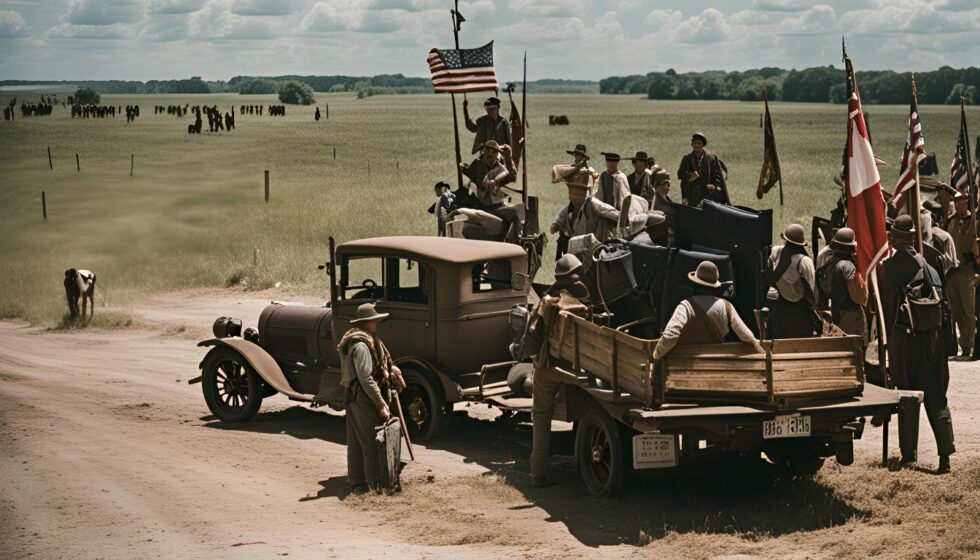
The year was 1865, and the Confederacy had emerged victorious from the American Civil War. The turning point came at the Battle of Gettysburg, where General Robert E. Lee’s audacious tactics outmaneuvered the Union forces, leading to a decisive Southern victory. The North, weary of the prolonged conflict and facing internal dissent, eventually agreed to a negotiated peace. The Treaty of Richmond formally recognized the Confederate States of America as a separate nation, forever altering the course of history.
In the immediate aftermath of the war, the Confederate States faced the daunting task of nation-building. The South, ravaged by years of fighting, required extensive reconstruction. Richmond, the Confederate capital, became a hub of activity as politicians, businessmen, and former soldiers converged to shape the new nation. Jefferson Davis, the President of the Confederacy, sought to unify the disparate states under a common cause while maintaining the delicate balance of states’ rights that had been a cornerstone of the Southern identity.

Economically, the Confederacy struggled. The war had devastated its infrastructure, and the blockade had crippled its trade. To rebuild, the South turned to its primary resource: cotton. However, the international market had shifted, and European powers, which had diversified their cotton sources during the war, were less dependent on Confederate cotton. Desperate to revitalize their economy, Confederate leaders reluctantly considered industrialization, albeit at a slower pace than the North. They invited foreign investments, particularly from Britain and France, who had shown sympathy to the Southern cause during the war.
The institution of slavery, the bedrock of the Southern economy, remained intact, though under increasing scrutiny. International pressure and moral opposition to slavery grew, with Britain, having abolished slavery decades earlier, leading the charge. Domestically, the issue of slavery also created tension within the Confederate states. Some leaders, recognizing the unsustainable nature of slavery, began to explore gradual emancipation plans coupled with compensation for slave owners and the establishment of systems for integrating freed slaves into the economy. These efforts were met with fierce resistance from the more staunchly pro-slavery factions, leading to political infighting.
The United States, now a separate entity from the Confederacy, underwent its own transformation. The Union, grappling with the loss and the need to redefine its national identity, focused on industrial growth and westward expansion. The Homestead Act and the transcontinental railroad projects accelerated, fueling migration and economic development. The abolition of slavery in the North spurred a wave of social reform, as leaders like Frederick Douglass and Harriet Tubman continued to fight for the rights of African Americans.

Tensions between the two nations remained high. Border disputes and economic competition led to a series of skirmishes and diplomatic standoffs. The Mason-Dixon Line, now an international border, became a symbol of the ideological divide between the two Americas. In the West, territories like Kansas and Missouri, which had been battlegrounds during the war, became contentious zones with divided loyalties, leading to sporadic violence and unrest.
In the midst of this turmoil, a confrontation loomed on the horizon. The discovery of gold in the Colorado Territory, claimed by both nations, threatened to ignite another war. Both the Union and the Confederacy sent troops to the region, leading to a tense standoff. The fragile peace teetered on the brink of collapse as diplomatic efforts faltered.
The resolution came from an unexpected source. Clara Barton, a renowned nurse who had tended to soldiers on both sides during the war, embarked on a mission of peace. She organized a summit in St. Louis, inviting leaders from both the Union and the Confederacy to negotiate a peaceful solution. Her efforts were supported by influential figures from both nations, including former generals who had seen enough bloodshed.
The St. Louis Summit marked a turning point. Through intense negotiations, the two sides agreed to a series of compromises. The Colorado Territory would be divided, with joint administration and shared economic benefits. Additionally, a demilitarized zone was established along the border, and both nations committed to reducing their military presence in the region.

The aftermath of the summit saw a gradual thawing of relations between the North and the South. Trade agreements and cultural exchanges began to bridge the divide, though underlying tensions persisted. The Confederacy, still grappling with its internal contradictions, slowly moved towards a more industrialized economy and began the painful process of addressing the issue of slavery. By the end of the 19th century, a series of emancipation acts had been passed, leading to the gradual abolition of slavery in the South.
The United States and the Confederate States of America remained two distinct nations, each shaped by their divergent paths. The legacy of the Civil War continued to influence their politics, culture, and society. Yet, the efforts towards reconciliation and cooperation, spearheaded by visionaries like Clara Barton, laid the foundation for a more peaceful coexistence. The world watched as these two Americas, born from the same revolution, navigated their futures side by side, forever marked by the war that had once torn them apart.




